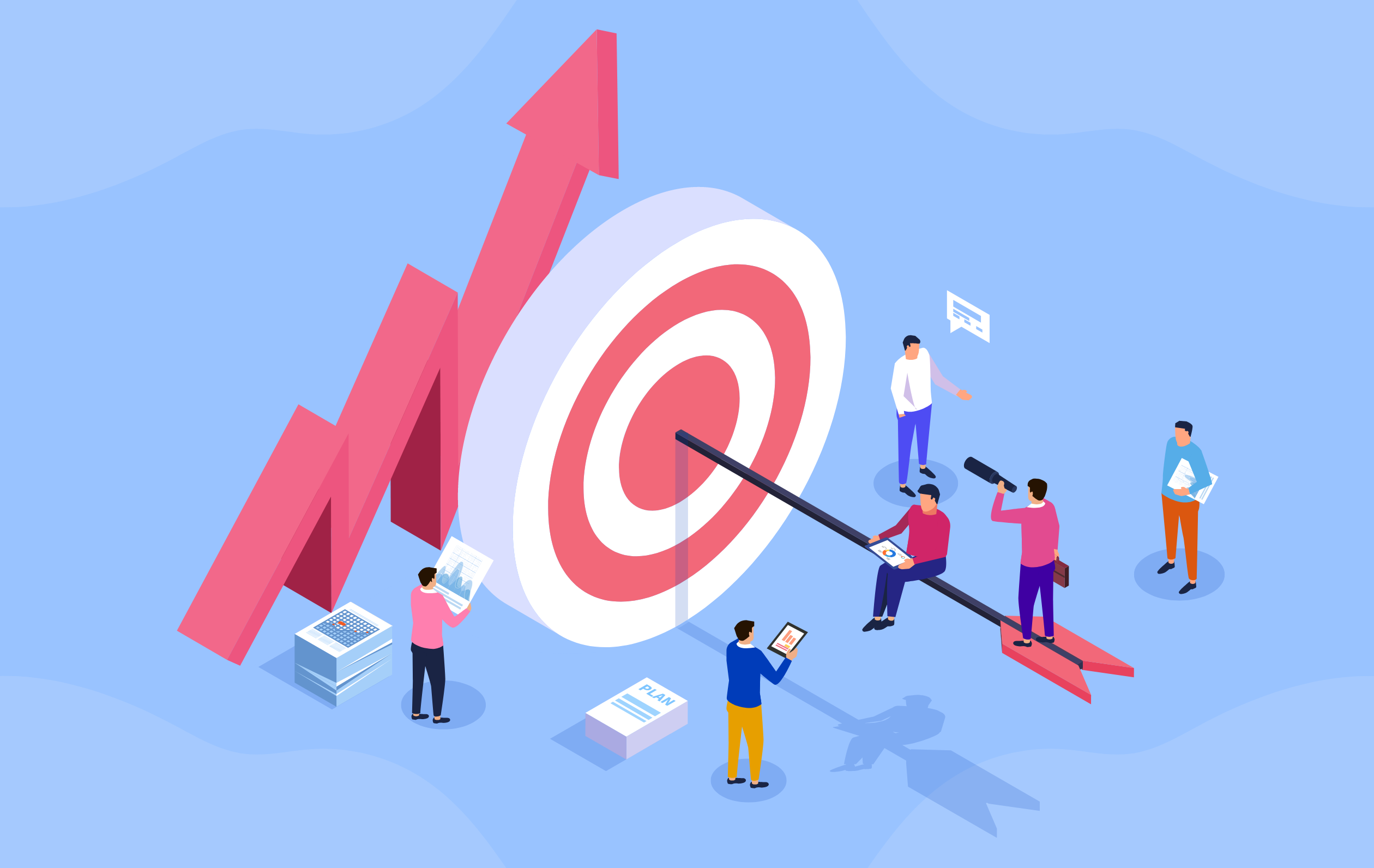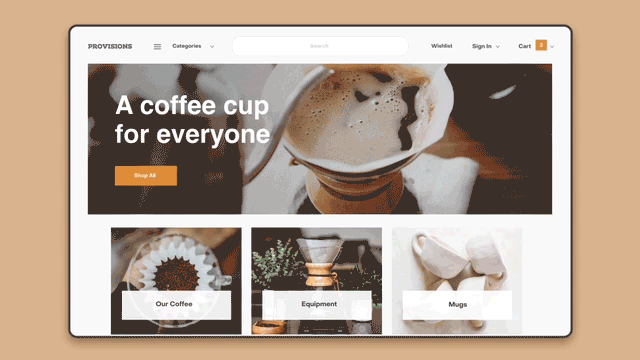By Miva | November 12, 2020

See why top ecommerce brands use Miva’s no-code platform to run
multiple stores, manage massive catalogs, and grow their revenue.
If you’ve developed a great website and employed best practices for B2B marketing to draw traffic, but you’re still not getting the conversion rate you’d like, it's time to get acquainted with B2B conversion rate optimization (CRO). In today's highly competitive world of ecommerce, it's just not enough for businesses to attract website traffic. It’s also important to convert that traffic into actual sales. In this blog, we will explore what B2B ecommerce conversion rate optimization is, how to define a B2B conversion, unique considerations for wholesale conversions which differ from retail, and offer specific techniques for businesses to improve their B2B conversion rates and increase revenue. The result: you'll optimize your B2B website and dramatically improve your customers’ shopping experience in the process. That’s a major win/win.
B2B ecommerce conversion rate optimization is the process of improving the percentage of website visitors that take a specific action on your site, such as making a purchase or filling out a contact form. "Optimization" means enhancing your website content to better connect with your target audience and improve the online user experience. While many ecommerce website optimization techniques are universal, there are some special considerations when trying to improve B2B conversions. In order to zero in on what great B2B website CRO entails, it’s important to define our goals, as wholesale businesses operate on different metrics for success.
In this recent blog about important website metrics, we explored why what qualifies as a “good” conversion rate varies depending upon what type of business you are measuring, and which aspects of your business are most important for your success. While the average conversion rate for all ecommerce websites is around 2.86 percent (including both retail and wholesale), "healthy" rates will depend on the products or services you provide and the type of conversion that you are measuring. In B2B sales, that number can vary wildly from one industry to another, from 4% for industrial down to 1.5% for tech. Across all industries combined, the B2B ecommerce rate is 1.7%. So when you are trying to see how your results stack up, it’s important to narrow the focus of your comparison. This leads us to a crucial question…
Broadly speaking, a conversion can be any action you want buyers to take on your website. Maybe it’s a completed transaction. Maybe it’s a form fill. Maybe you want to define a conversion as anyone who visits a particular page on your site in response to paid advertising. This definition varies based on your goals, but one universal conversion metric in B2B wholesale ecommerce is a qualified lead.
B2B sales teams often look for specific criteria which might identify a great lead. These factors could include business size, intent, or spending power. For some businesses, a conversion might mean acquiring this kind of information about a prospective customer, even if they haven’t purchased anything yet. For example, if someone browsing an ecommerce store actively requests more information about a product, that might indicate that they are closer to making a buying decision. The request itself “qualifies” the customer as a better lead, and can be considered a “conversion.” Now, the sales team knows to devote more resources to reaching out to this customer.
Successful B2B ecommerce CRO is a huge win for online wholesalers because it is an incredibly cost-effective way to increase sales—especially for businesses which operate with very tight margins. Once a business defines exactly what constitutes a conversion or a qualified lead, it becomes easier to hone techniques which encourage that specific action. Conversion optimization is all about fine tuning B2B ecommerce features to inspire more buyers to meet that threshold. In the process, customers will also get the benefit of a well-honed buying experience which feels like it was designed to make their lives easier.
CRO data provides real feedback into what resonates for customers. How effective is your messaging, content, pricing, UI, and customer service? Your B2B conversion rate optimization efforts will be a fairly direct metric of what’s working and what isn’t. The more experimentation you do with CRO techniques, the more insight you’ll get. These kinds of insights are gold for B2B businesses, and is the kind of thinking we recommend in this blog about how to grow a successful wholesale business.
Converting a sale is not limited to the product page! There are many different "pathways to conversion" across your entire ecommerce site. In fact, it’s valuable to ask yourself how every single page on your site is either contributing to conversions or isn’t. Just like on retail sites, a comprehensive B2B ecommerce CRO strategy should include improvements to areas like landing pages, website copy, calls-to-action, and site navigation. It often involves working with tools like heatmaps, analytics, A/B testing, and recordings.
The complexity of B2B catalogs is a main contributing factor which fuels the unique buying processes, customer types, and specific product/industry requirements associated with sophisticated B2B ecommerce sites. Here are some B2B conversion rate optimization tactics to optimize your site and drive up wholesale conversions—what you’ll find across all of them is the need to understand and serve the unique needs of your customers.
B2B ecommerce CRO is all about the customer. As part of your sales process, you probably already have developed clear buyer personas that allow you to understand the needs and motivations of your website visitors as they interact with your business. (If not, you should - these expert interviews will help you get started.) Evaluate the following:
Much of this analysis will feel like common sense, but try to assemble analytics data to back up your assumptions. By using tools like surveys and heat maps, you can find out how users are experiencing your site, and where to focus your conversion optimizing efforts. Overall, you’ll want to add more detail, convenience, creativity, and incentives to those specific areas of customer interaction. Simply narrowing down where to utilize your time and resources is already a huge step towards an optimized website.
Calls-to-action (CTAs) help entice visitors to take the desired actions on your website. The stronger and more compelling your CTAs are, the more conversions they will be able to generate. But simply adding “Buy Now” buttons to every page won’t cut it for advanced B2B ecommerce conversion optimization. Again, think about how your best wholesale customers are making decisions about purchasing:
A great B2B CTA actually helps your shoppers have a better impression of your store! Customers should always feel like their time is being spent efficiently, and every question they might have has been considered by the business.
Consider a variety of banner images, hyperlinked texts, button colors, written copy, and different placements on your website to work with the needs of your users. Your CTAs should be informed by your buyer personas and target the things that they are looking for, care about, and prioritize—this is a key tenet of great CRO conversion rate optimization. You can also leverage ecommerce page building tools to make the CTAs dynamic, allowing you to better target each audience with the right CTA.
At their core, landing pages are designed to deliver focused content and provide everything visitors need to take action with no distractions. The ability of landing pages to influence visitors makes them an important component of any B2B conversion rate optimization plan. One effective way to optimize your landing pages is to run A/B tests. Great B2B conversion rate optimization always requires some trial and error, so don’t be discouraged if some techniques don’t initially work as well as others. A/B tests can quickly reveal the content features, details, and design that align most with your target audience.

You can test almost everything you share with your customers online. Try testing variations of:
Which variations encourage users to take that next step with you? After fine-tuning your landing pages, consider testing high-impact webpages throughout your site, like your homepage and product listing pages. Changes to these pages can help capture the attention of new visitors, create a positive first impression, inform buying decisions, and further lead them toward the conversion path.
The content on your website can serve as effective gateways to your readers. Here’s the pro tip for optimizing content for conversions—focus on optimizing content that already has high traffic levels but low conversion rates. These pages are typically ripe for huge conversion gains. Experiment with adding pop-ups, new offers, time-based incentives, refreshing the copy, and swapping out the CTA to improve conversion results on these pages. You will also want to compare with your SEO results to ensure your content directly matches the search intent and expectations of your target visitors. Until a page has good traffic though, your resources will be better spent on the areas your customers are currently visiting the most. We compiled a thorough list of SEO best practices here.
By optimizing for your buyers, adding variety to calls-to-action, A/B testing landing pages and high-impact webpages, and optimizing high-traffic content, you can improve your B2B conversion rates and grow your business. Remember to evaluate your current conversion rate as a benchmark for ongoing improvement and to use tools like heat maps and surveys to better understand your users' needs and motivations. Guiding customers to make purchases quickly and efficiently helps them have a successful shopping experience. This is never more important than in B2B. Your B2B buyers will thank you for helping them have a more efficient experience when shopping for their own businesses.
Use our interactive website assessment tool to assess how good your conversion rates are and learn how to improve. This free do-it-yourself tool also assesses other areas for improvement, including your on-site experience, back-end capabilities, and checkout process.

Love it? Share it!
This blog was originally published on November 12, 2020 and updated on March 30, 2023.
Back to topNo worries, download the PDF version now and enjoy your reading later...
Download PDF Miva
Miva
Miva offers a flexible and adaptable ecommerce platform that evolves with businesses and allows them to drive sales, maximize average order value, cut overhead costs, and increase revenue. Miva has been helping businesses realize their ecommerce potential for over 20 years and empowering retail, wholesale, and direct-to-consumer sellers across all industries to transform their business through ecommerce.
Visit Website